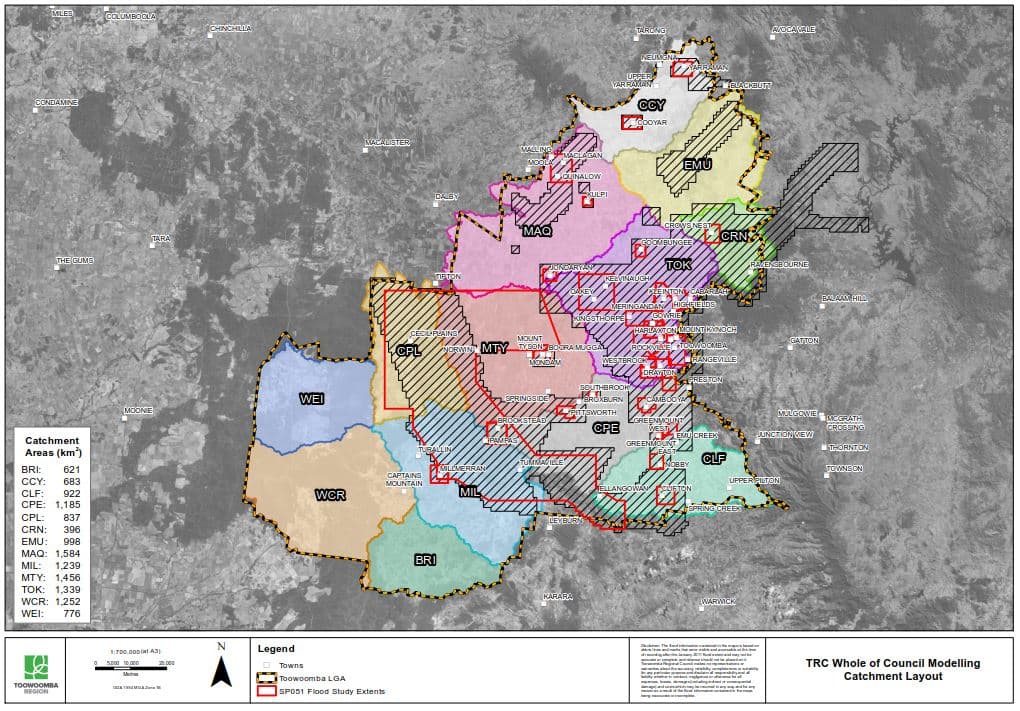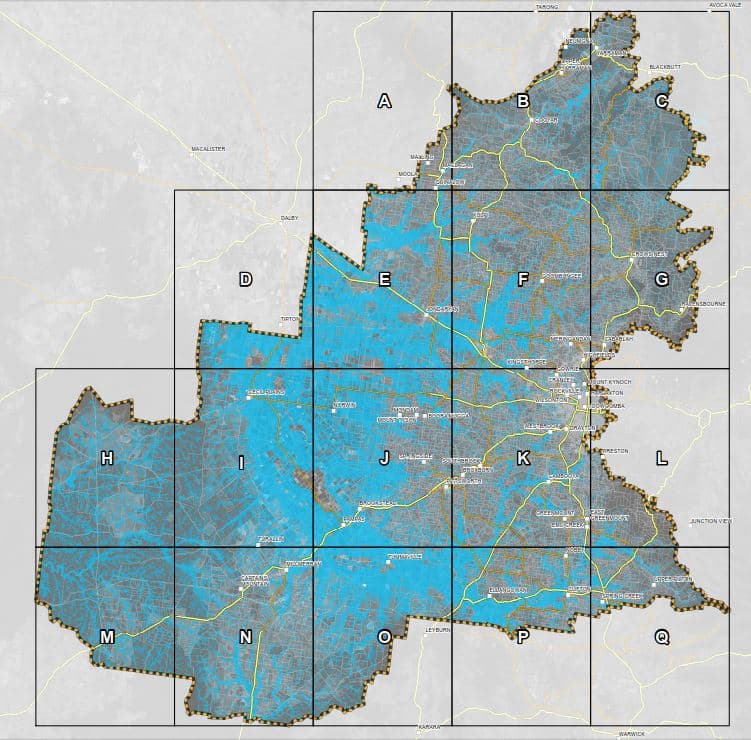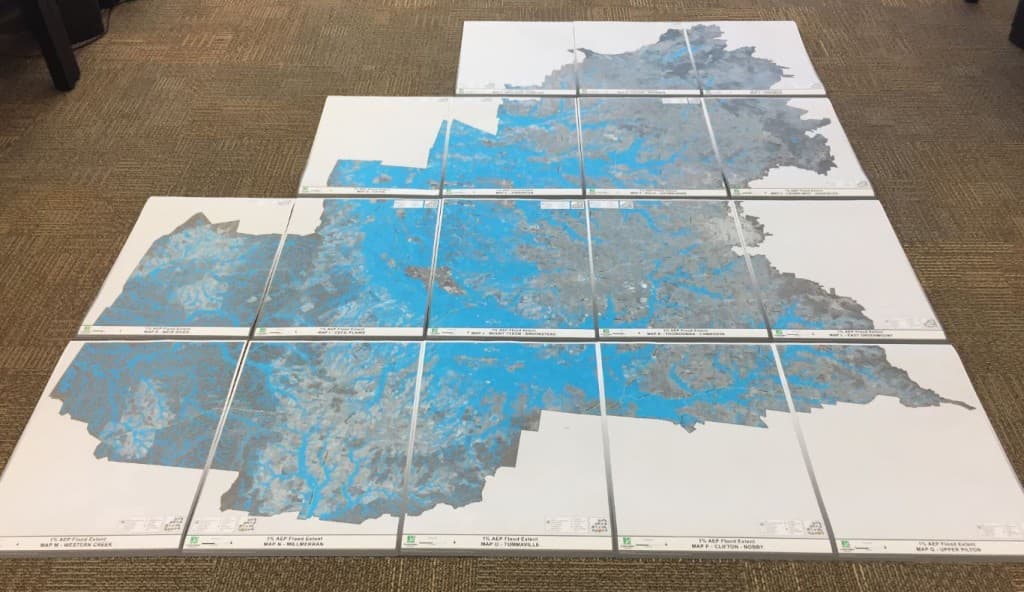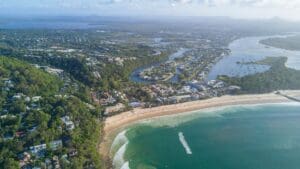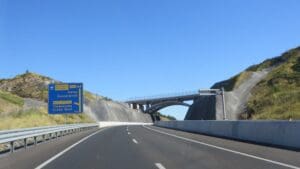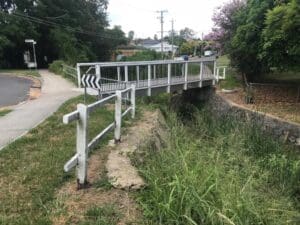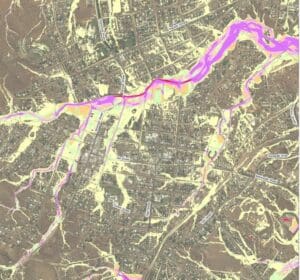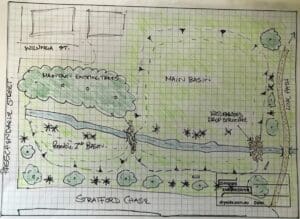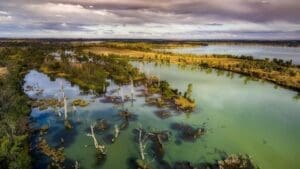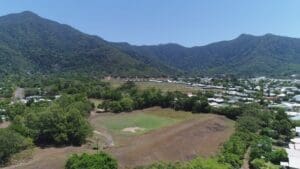Whole of LGA Flood Mapping

Client
Scope
Impact

Client
Scope
Impact
In 2013, Toowoomba Regional Council (TRC) embarked on a process of undertaking flood studies for 35 townships within the LGA for the purpose of informing a planning scheme update, emergency management and infrastructure planning. The extent of these studies mapped 22% of the 13,000 km² LGA. Although a very large undertaking, significant residual risk existed. Floodplain mapping of areas not covered by detailed modelling was available; however, reliability was questionable as it was either based on extreme design rainfall or floodplain delineation based on soil characteristics.
The purpose of this project was to develop rapid, low cost flood extent mapping for the 1% Annual Exceedance Probability (AEP) design flood for the whole of Council LGA. A previous GPU modelling exercise has been undertaken in 2014. Whilst useful at the time, this exercise utilised very coarse model topography derived from SRTM only (no LiDAR) and was based on a duration independent synthetic storm approach to model inflows.
The TRC LGA was divided into 13 TUFLOW GPU models, utilising topographies with 10 m grid spacing created from a blend of LiDAR-derived DEM data and SRTM data. ARR 1987 rainfall was used to validate the results to existing flood studies. The design modelling was completed using ARR 2016 rainfall and was validated using RFFE techniques. The final product included a seamless 1% AEP flood extent for Toowoomba LGA developed from a combination of the 35 flood study results and the new GPU direct rainfall results.
The mapped 1% AEP flood extent is being used to inform emergency management, planning scheme updates and to assist with targeting future study areas. In addition to modelling and mapping of results for the 1% AEP event, models were also set up for the 2%, 10%, 20% and 50% AEP design events to enable Council to run the models in-house at a later stage.
